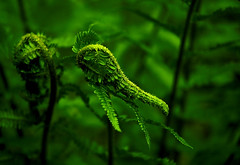 Do a search on 'fractal universe' and numerous resources will come up speculating that the universe is fractal in nature.
Do a search on 'fractal universe' and numerous resources will come up speculating that the universe is fractal in nature.It must be too obvious. Even children would notice the visible spirals apparent in tiny objects as well as in large ones. Notice the patterns in sunflowers and seashells, or take a look at satellite photos of typhoons and pictures of galaxies.
The spiral pattern appears in both small and gargantuan objects which signify that the universe has an inherent fractal property. The spiral, the sphere, are just a few basic clues that denote that our world has the property of "self-similarity". Take a closer look at a fern's leaf, it is an exact replica of the whole fern including it's leaves! The patterns are just too overwhelming to ignore that it spawned a whole new science of Fractal Cosmology to investigate such a conjecture.
So what if the universe is a fractal? What are the implications if the cosmos is self-similar? What would it mean for us anyways?
Everyone would probably have a different answer but in context with this site, having a fractal universe would mean that 'archetyping' (a term I coined for pattern-seeking) is a wonderfully fruitful activity. It means that there is so much to be discovered out there. It means that there is an awesome landscape of adventure for the mind, such that a pattern - or an archetypal concept, discovered in one observational level can be used to unravel new knowledge in another.
And because fractals are the result of an 'algorithm' that dictates how the pattern appears (as exemplified by Mandelbrot Sets), it means that there is an ultimate cosmic algorithm, or 'archetypal functions' waiting to be tapped into.
And so, the answer to the question "So what if our universe is fractal?" is a resounding, "It is Fun!"



